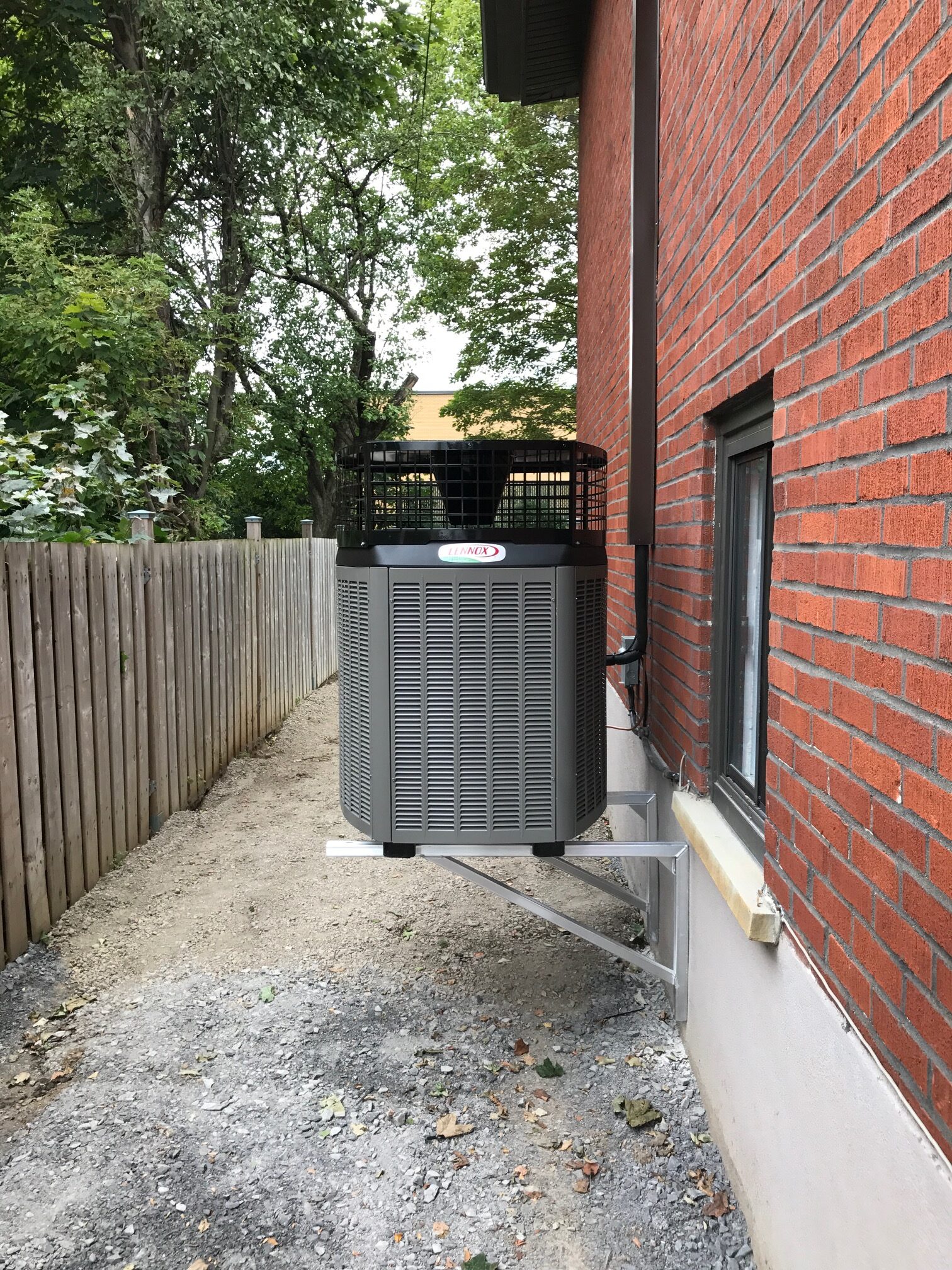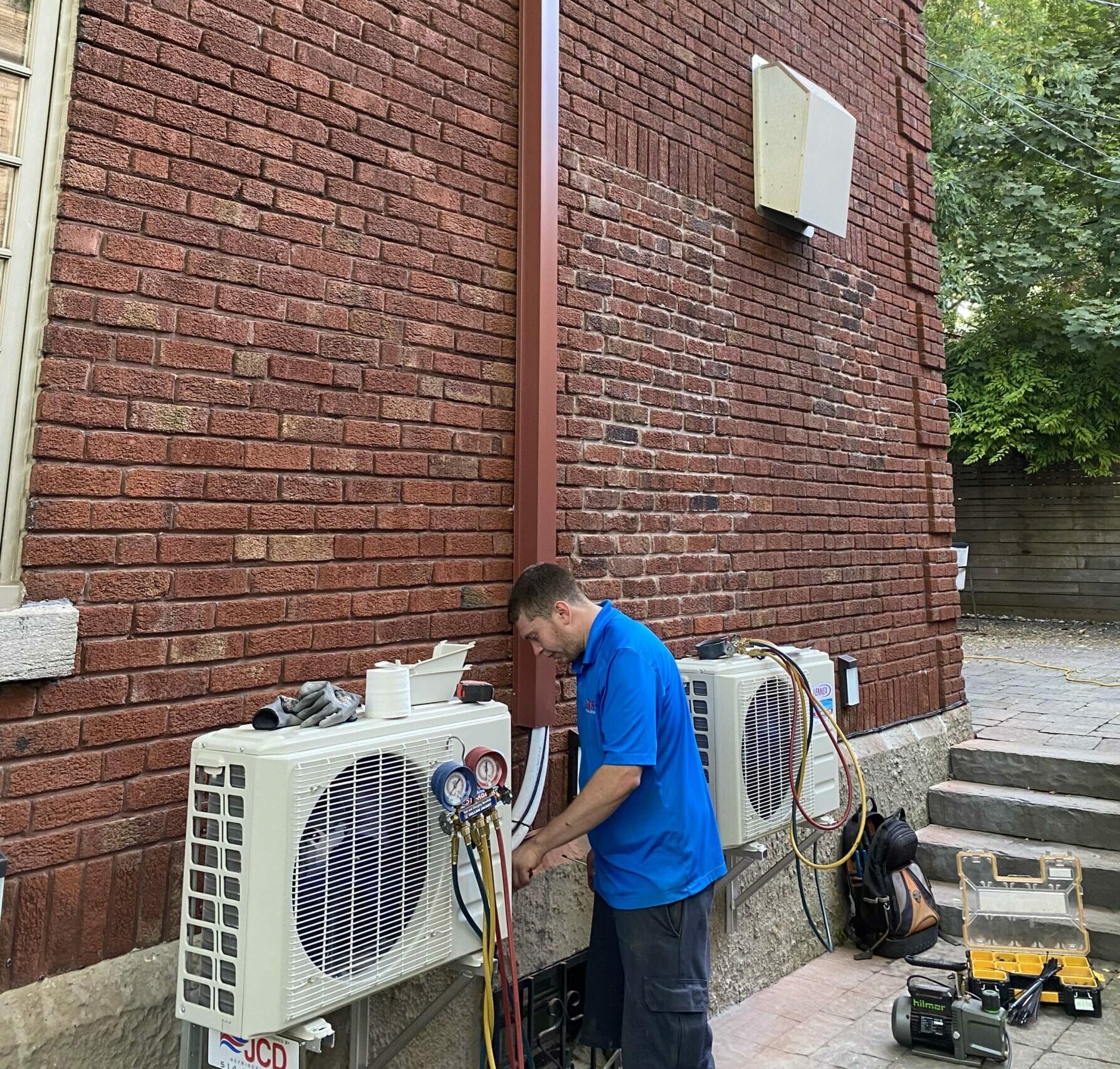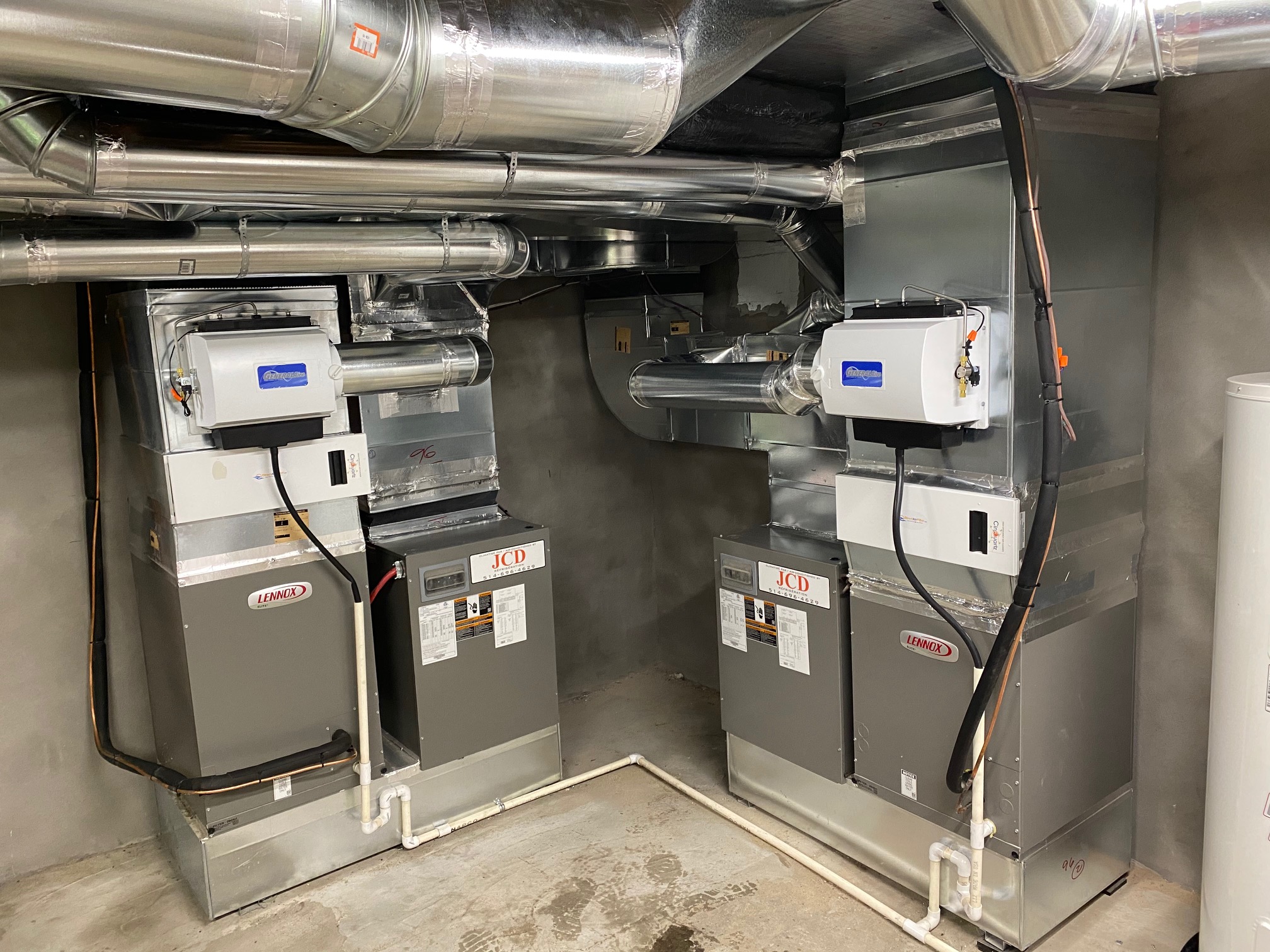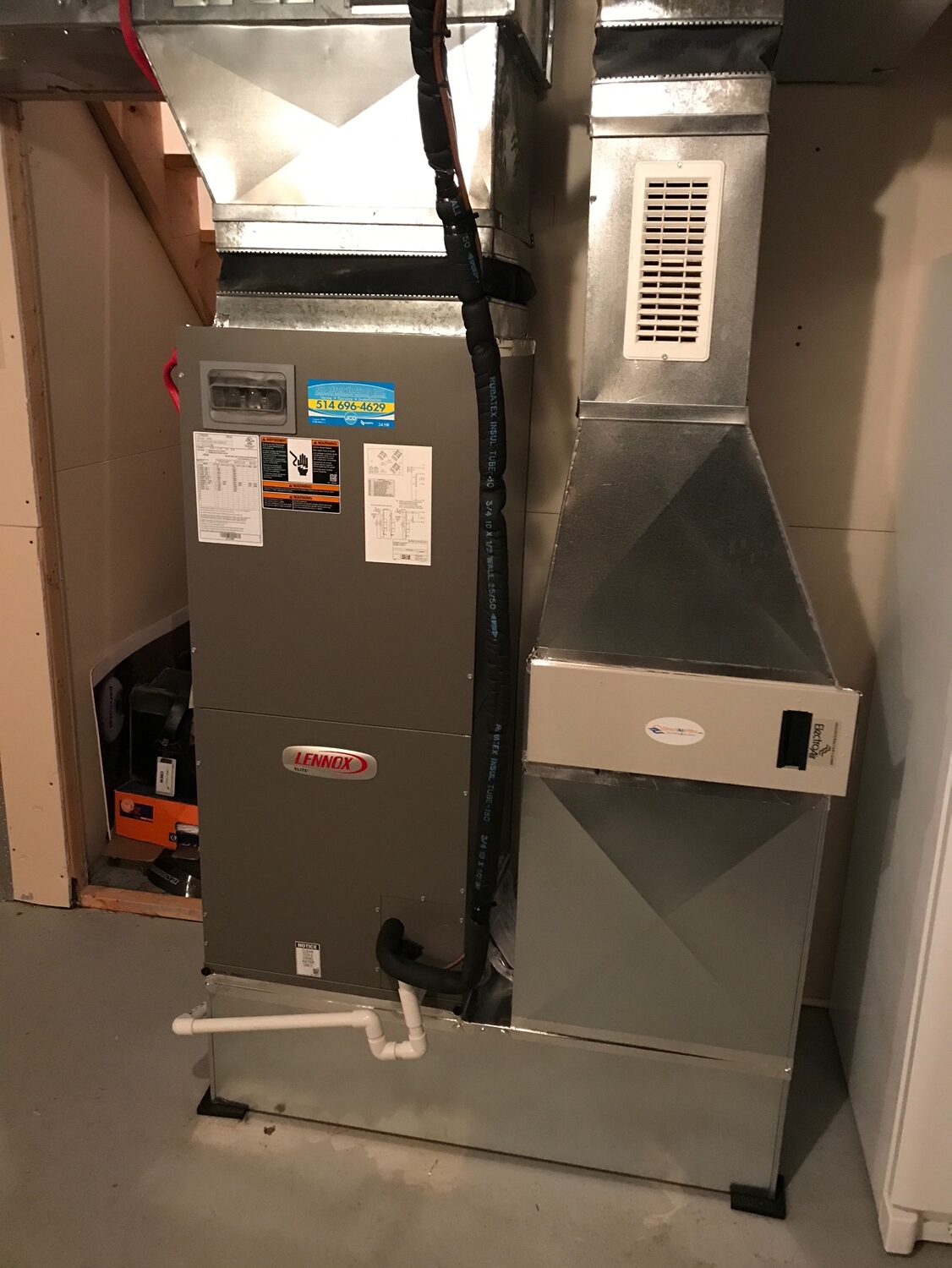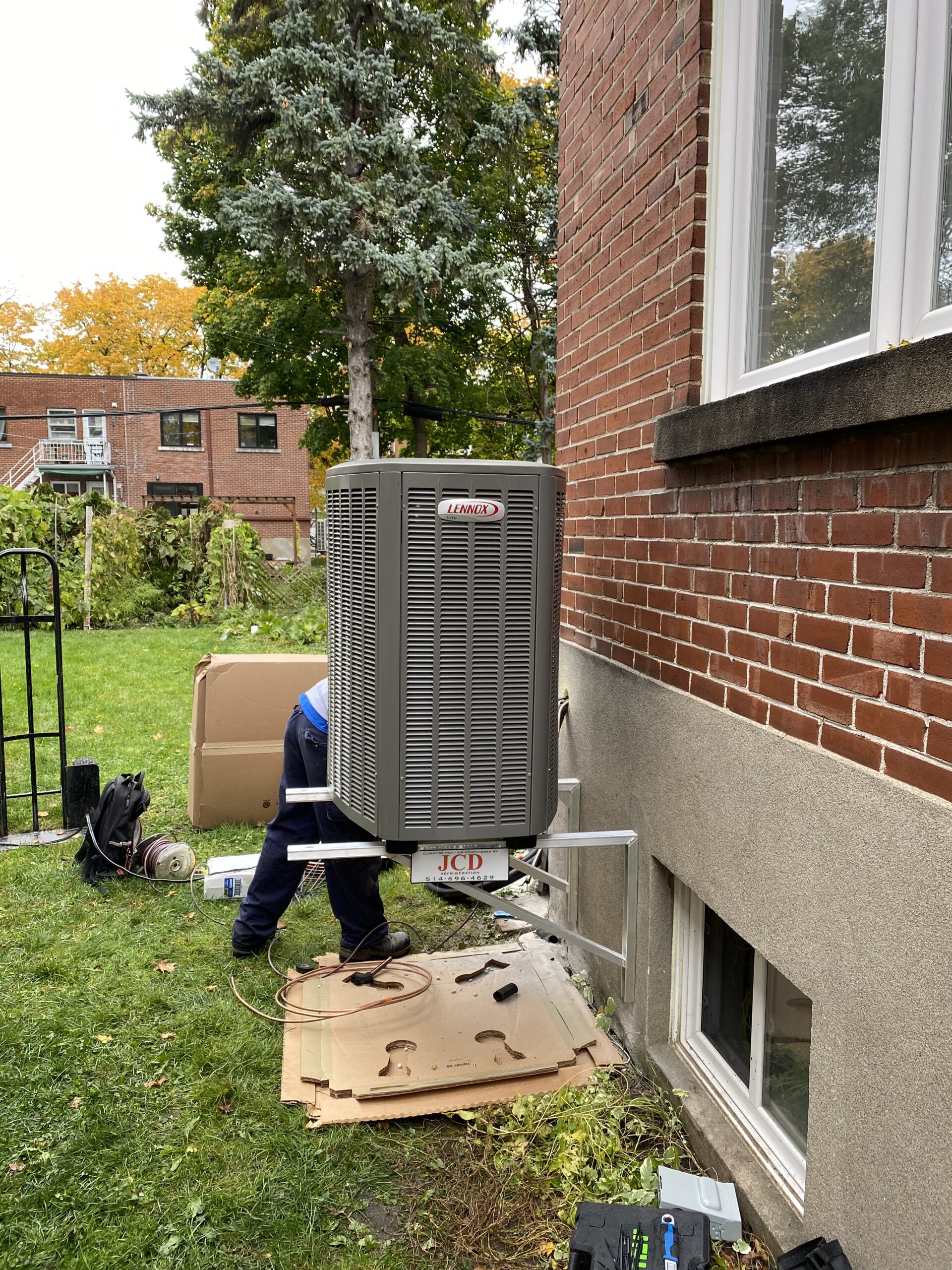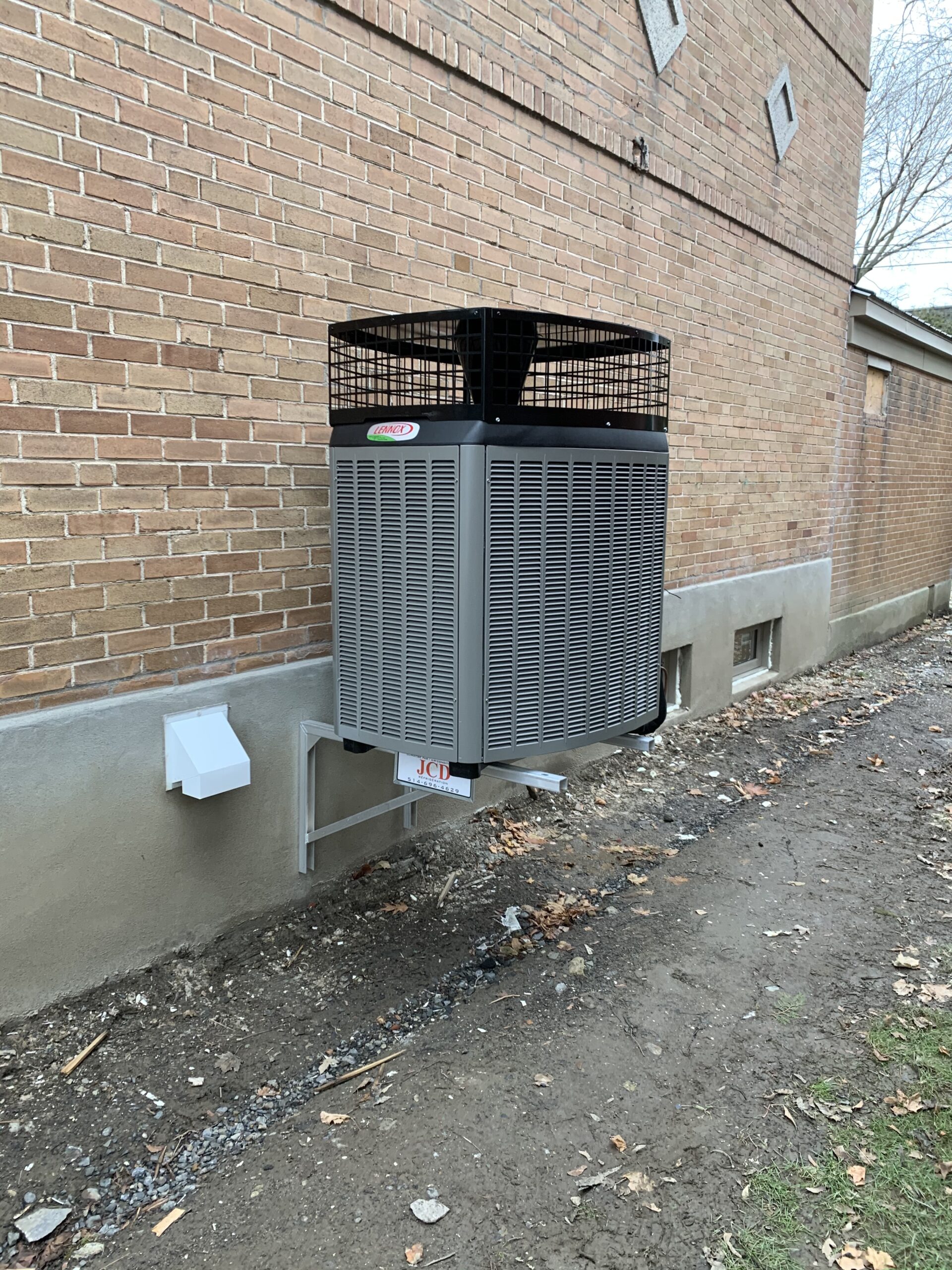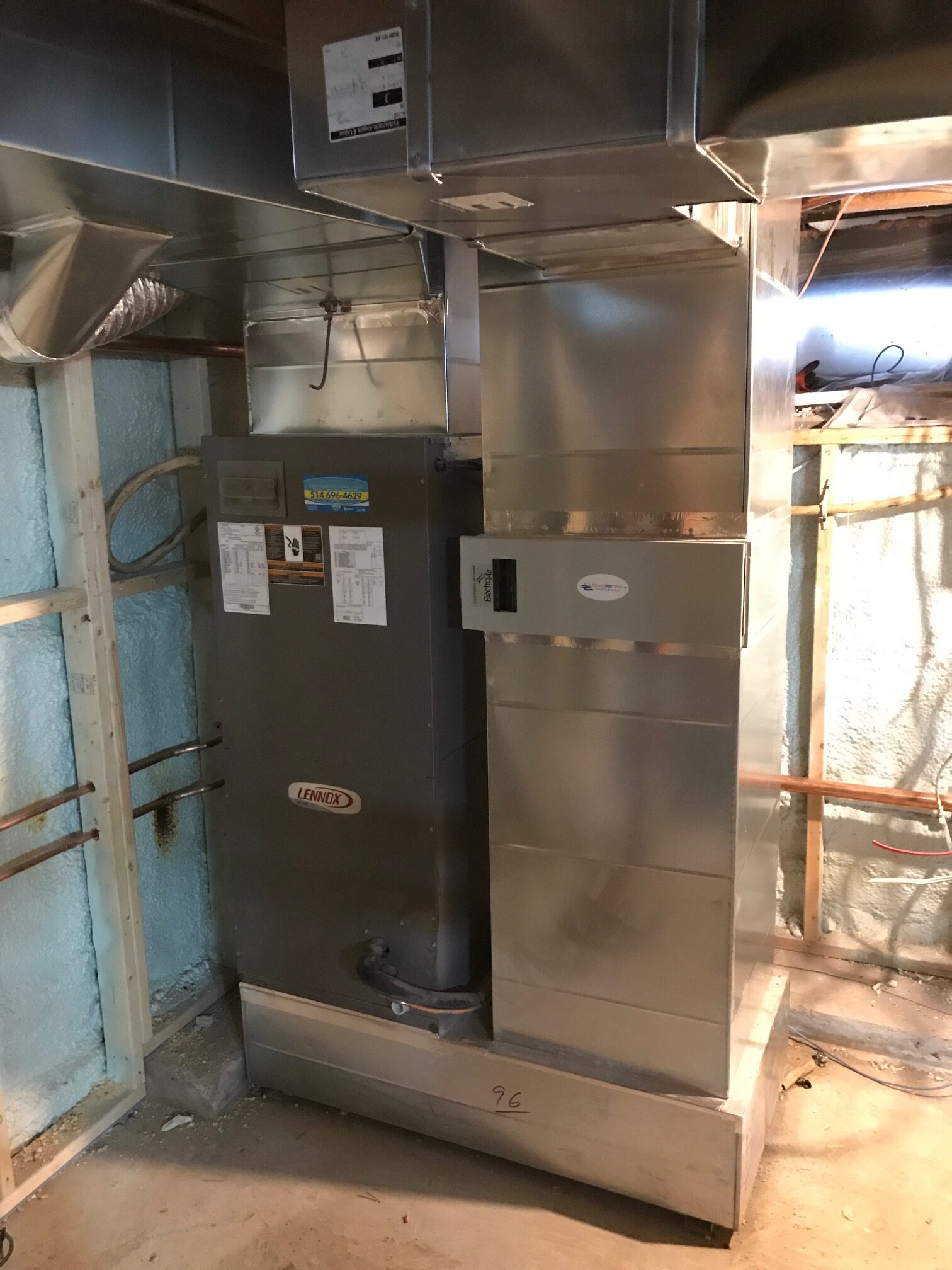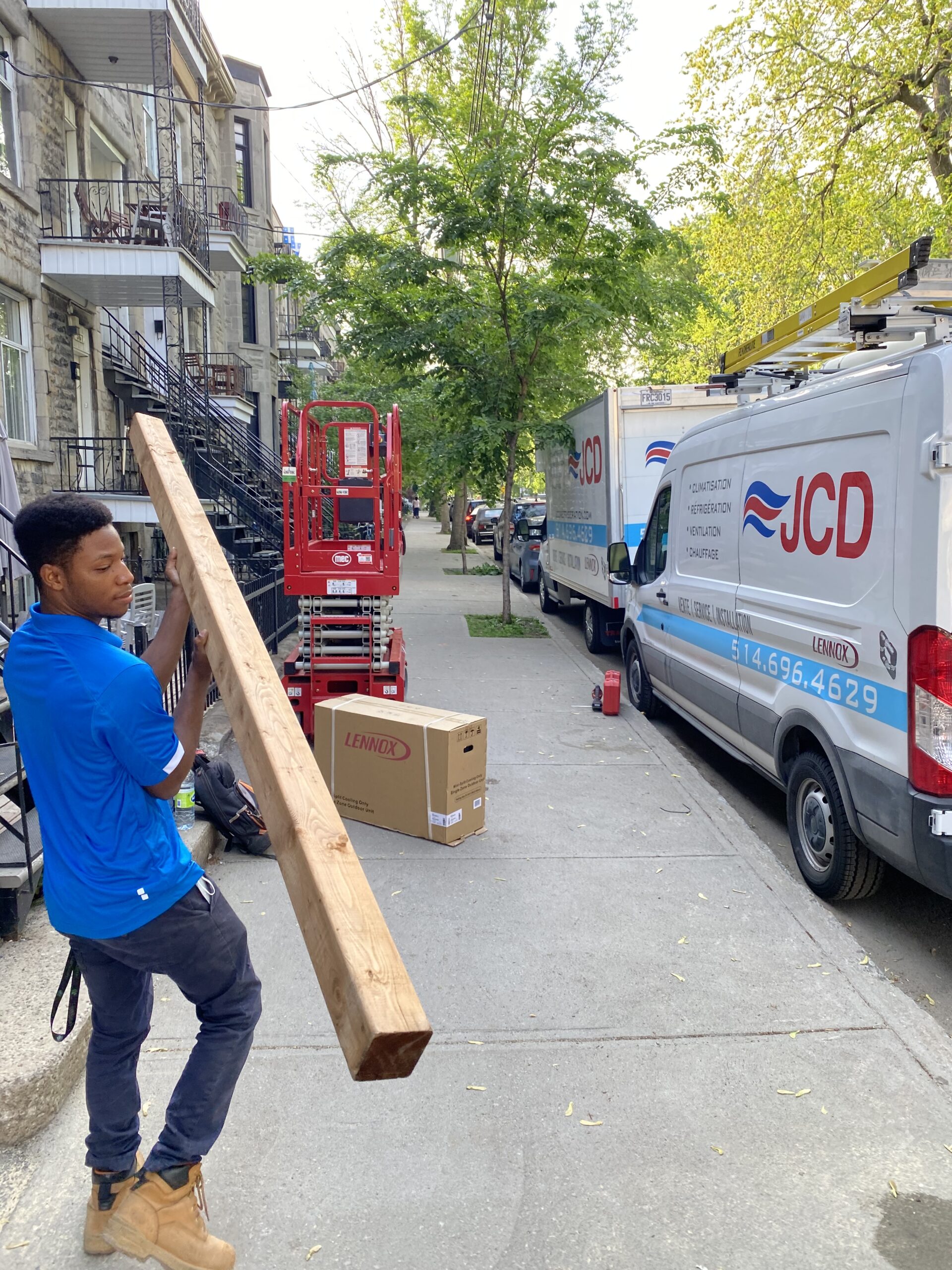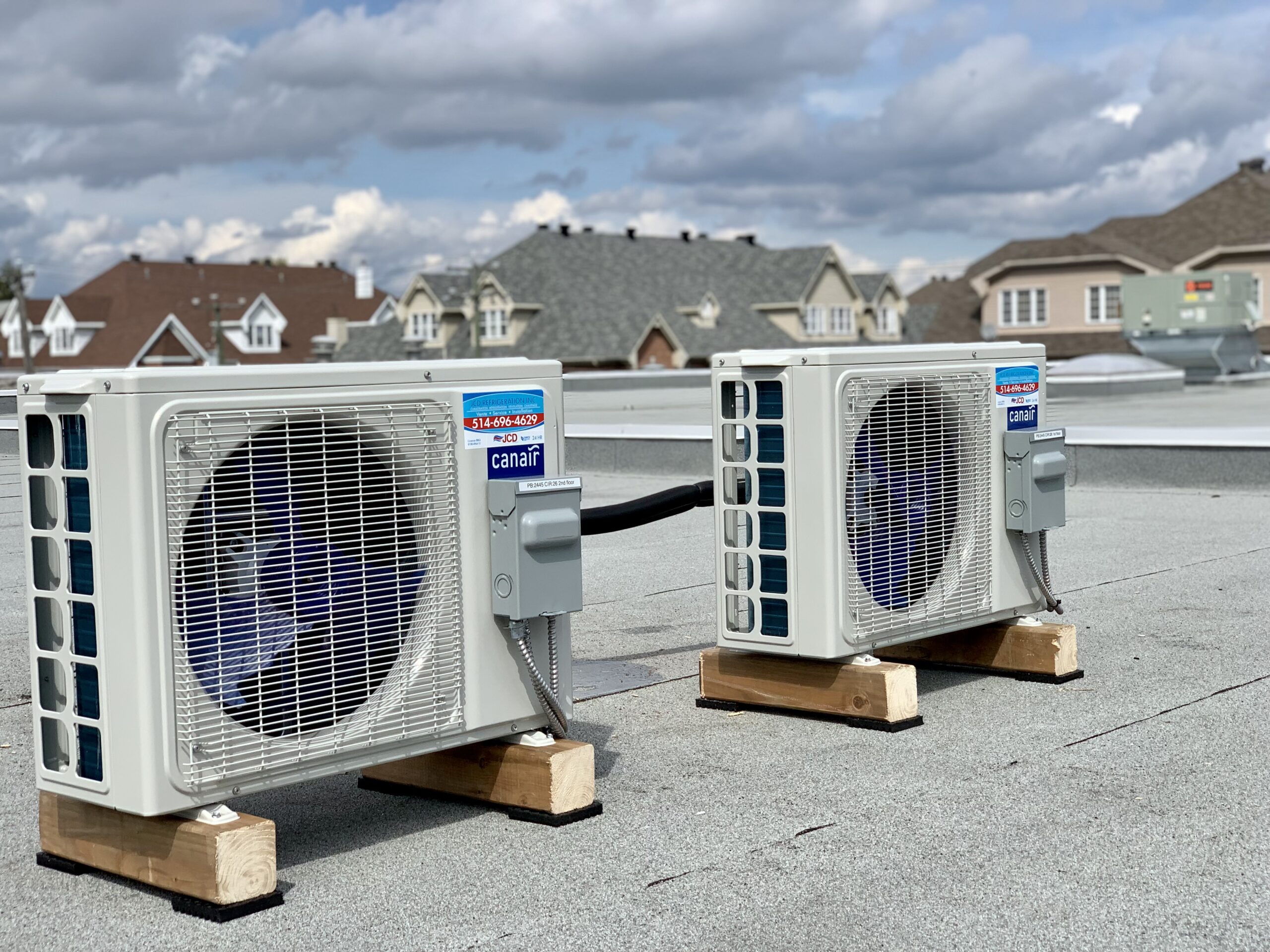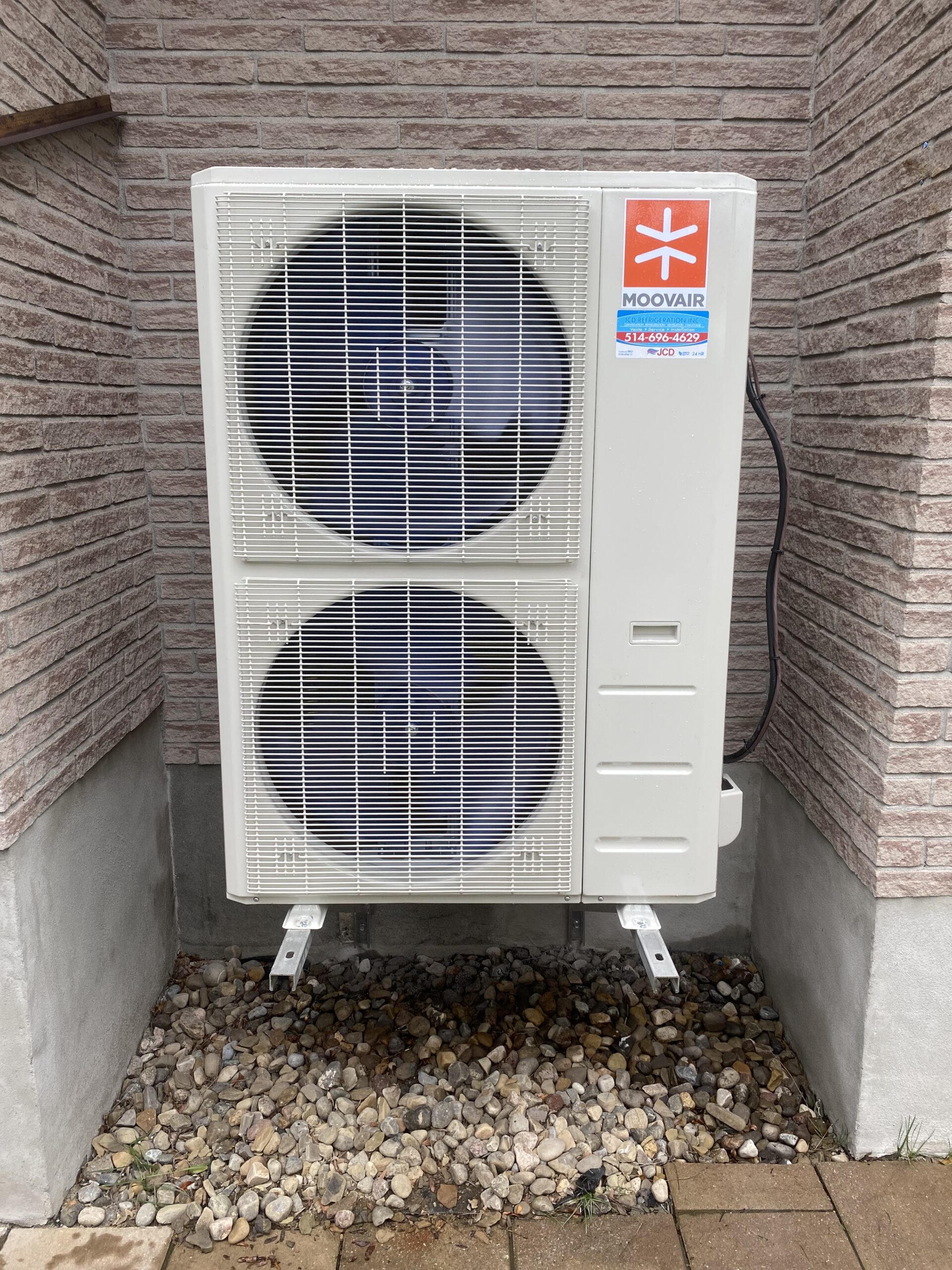JCD Refrigeration Inc. provides its customers with the most reliable and energy-efficient climate control systems available. Our skilled installation team will install your system to the highest standard, making sure to exceed your expectations and leave you satisfied.
- Assessment and Planning:
- The first step in cooling installation is to assess the cooling needs of the building. Factors such as the size of the space, insulation levels, occupancy patterns, and local climate are considered.
- Based on the assessment, a suitable cooling system is selected. Options may include central air conditioning systems, ductless mini-split systems, window units, or evaporative coolers.
- System Design:
- The selected cooling system is designed to meet the specific requirements of the building. This includes determining the appropriate size and capacity of the system, as well as the layout of ductwork or piping if applicable.
- Proper system design is crucial to ensure optimal performance, energy efficiency, and comfort.
- Installation of Equipment:
- Once the system design is finalized, the actual installation begins. This may involve placing and mounting the cooling unit, connecting it to ductwork or piping, and integrating it with the building’s electrical system.
- Installation tasks vary depending on the type of cooling system. For example, installing a central air conditioning system may involve placing the condenser unit outdoors, installing an air handler or furnace indoors, and connecting them with refrigerant lines and ductwork.
- Ductwork Installation (if applicable):
- For central air conditioning systems, ductwork may need to be installed or modified to distribute cooled air throughout the building. This may involve running ducts through walls, ceilings, or floors, and installing vents or registers in each room.
- Electrical Wiring and Controls:
- The cooling system is connected to the building’s electrical system, and controls such as thermostats are installed to regulate temperature settings and airflow.
- Proper electrical wiring and control setup are essential to ensure safe and reliable operation of the cooling system.
- Testing and Commissioning:
- After installation, the cooling system undergoes testing to ensure that it is functioning properly. This may involve running diagnostic checks, testing airflow and temperature distribution, and verifying system controls.
- Testing also includes checking for refrigerant leaks, verifying proper drainage, and ensuring that the system meets safety and regulatory standards.
- User Training and Handover:
- Once the cooling system is installed and tested, users are provided with training on how to operate and maintain the system effectively. This includes instructions on adjusting settings, replacing filters, and scheduling routine maintenance tasks.
- Documentation and Warranty:
- Complete documentation of the installation process, including equipment manuals, warranty information, and any permits or certifications, is provided to the building owner for future reference.
Professional installation by qualified cooling technicians is essential to ensure the efficiency, reliability, and longevity of the cooling system. Proper installation also helps optimize indoor comfort and minimize energy costs over the system’s lifespan.
